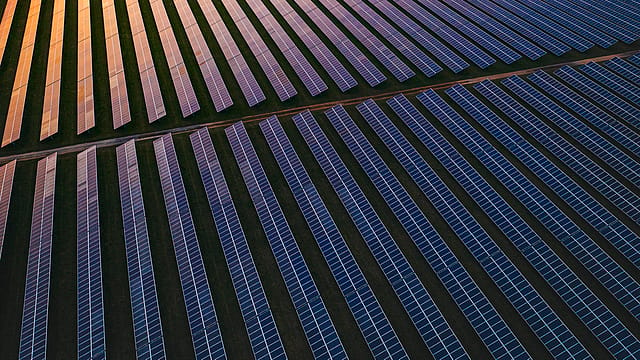Renewables now powers 47% of India's installed capacity: Eco Survey
ADVERTISEMENT

The Economic Survey 2025 says the country's total renewable energy installed capacity increased by 15.8% in the last year, reaching 209.4 GW (gigawatts), up from 180.8 GW in December 2023. With this, renewable energy now constitutes about 47% of India's total installed capacity and is closer to achieving the committed target of generating over half of the energy basket from non-fossil fuel energy sources.
While solar constitutes 97.8 GW, hydro contributes 52.1 GW, wind accounts for 48.2 GW and the remaining 11.3 GW comes from bio-energy sources.
So far, rooftop solar systems for more than 7 lakh households (as of 9 January 2025) have already been installed. The PM-Surya Ghar: Muft Bijli Yojana aims to install rooftop solar plants in one crore households, which is expected to enable approximately 30 gigawatts of residential rooftop solar capacity and contribute to an overall rooftop solar capacity addition of 40-45 gigawatts by 2027.
The Economic Survey says the daily average power supply has improved from 22.1 hours in FY14 to 23.4 hours in FY24 in the urban areas and from 12.5 hours in FY14 to 21.9 hours in the rural areas. The gap between energy demand and supply has also declined from 4.2% in FY14 to a mere 0.1% by December 2024. To set up a robust power distribution infrastructure, a total outlay of ₹3 lakh crore and gross budgetary support of ₹97,631 crore was planned from FY22 to FY26. Projects worth ₹2.8 lakh crore have been approved to develop distribution infrastructure and implement smart metering solutions, says the Survey.
January 2026
Netflix, which has been in India for a decade, has successfully struck a balance between high-class premium content and pricing that attracts a range of customers. Find out how the U.S. streaming giant evolved in India, plus an exclusive interview with CEO Ted Sarandos. Also read about the Best Investments for 2026, and how rising growth and easing inflation will come in handy for finance minister Nirmala Sitharaman as she prepares Budget 2026.
The projects under the Green Energy Corridor (GEC) aim to establish an intra-state transmission system that enhances grid capabilities for renewable energy. Currently, GEC-I is being implemented across eight states, successfully installing 9,136 circuit kilometres of transmission lines and 21,413 megavolt-amperes (MVA) substations. Meanwhile, GEC-II is progressing across seven additional states.
There has been notable progress in energy generation from non-fossil fuels, including nuclear, hydro, and renewable sources. This segment reached 420.8 thousand gigawatt hours in the 2022-23 provisional data, making up 22.8% of the total gross energy generation. Within this, large hydro represents 8.81%, nuclear contributes 2.49%, and renewables account for 11.52%.
As of 31 December 2024, the installed capacity for biomass power and cogeneration projects stood at around 9.8 gigawatts (grid-connected) and 0.92-gigawatt equivalent (off-grid), while waste-to-energy projects reached a capacity of 249.74 megawatts (grid-connected) and 370.19-megawatt equivalent (as on 9 January 2025) (off-grid). Under the biogas programme, around 5.1 million small biogas plants and 361 medium-sized biogas plants (totalling 11.5 megawatts) have been installed.
The Survey says as per the Energy Statistics of India 2024, provisional estimates indicate that the total final consumption of energy per capita for FY23 was 16,699 megajoules or 16.7 gigajoules, indicating that the gap between actual and required future energy consumption to fuel growth to achieve Viksit Bharat status is quite huge.
The Survey says there is no valid economic rationale for shutting down coal plants in India, leaving huge investments underutilised and stranded and without a dependable alternative in place.
